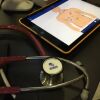I’ve developed a simple system for how to troubleshoot almost any piece of malfunctioning medical equipment. It is a system for working through a list of potential problems to reveal the worst potential problems quickly.
Start by checking the organ system the device attaches to, and then work your way back along the devices operational pathway ending at the power source.
In the example of an IV that is not running, don’t play with the drip chamber or bag first. Check the IV site first; look for signs of swelling or catheter blockage. Then check the IV tubing up to the drip chamber, and finally end at checking the bag.
In the example of a ventilator, many will stare at the control panel hoping to divine a solution. You should first listen to the lungs. Then check the ET tube, patient valve, ventilator circuit or tubing, then the ventilator controls and last check the oxygen supply and/or battery.
You will find this system can apply to any device.
In the example of a pulse oximeter, first check the finger. Is it cold or the nail covered in polish? Does the limb have a good pulse? Check the finger clip, then the wire, connector, and monitor, then end with checking the batteries.
If the BP monitor can’t get a reading, first check the limb, make sure it’s got a nice pulse, and then the cuff, hose connections, monitor and battery.
If you keep this logical sequence in mind whenever you run into a device issue, it will save you valuable time and make you more efficient in figuring out the problem. By first checking the organ system of the device interface, you will discover the most dangerous problems first. You will also soon find you can solve problems quicker by applying a systematic logic to their resolution.
Another way to put it is; Check Your Patient first, not the machine. Examine from Organ System to Power Source.
Often, the first sign of a device problem is a nagging feeling of dread. A good paramedic has a finely honed sense of impending doom. Trust it, it will keep both you and your patients alive. You will find that having a logical and systematic approach to dealing with these equipment-related “alarm bells” is a good way to reduce stress while improving patient care.


